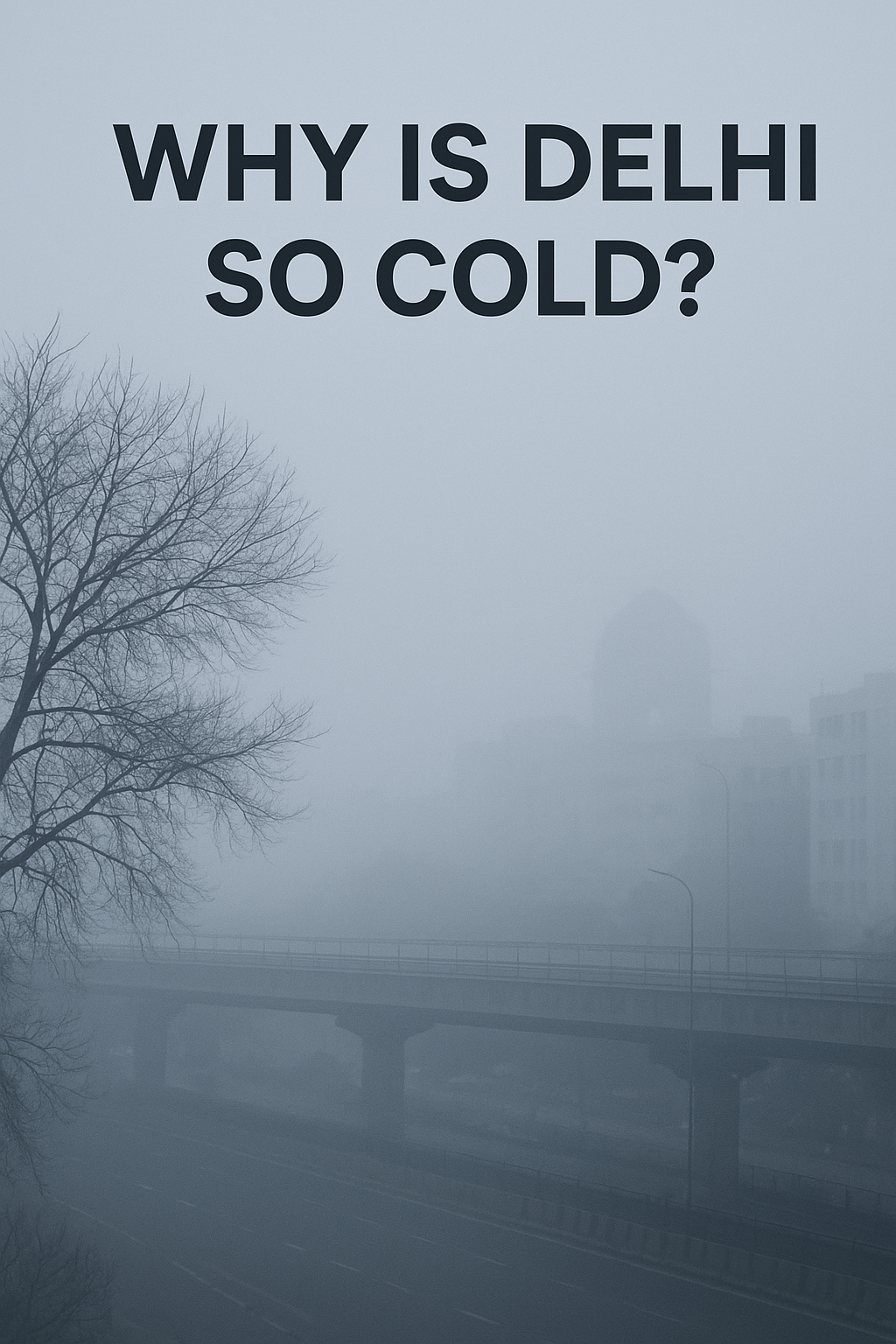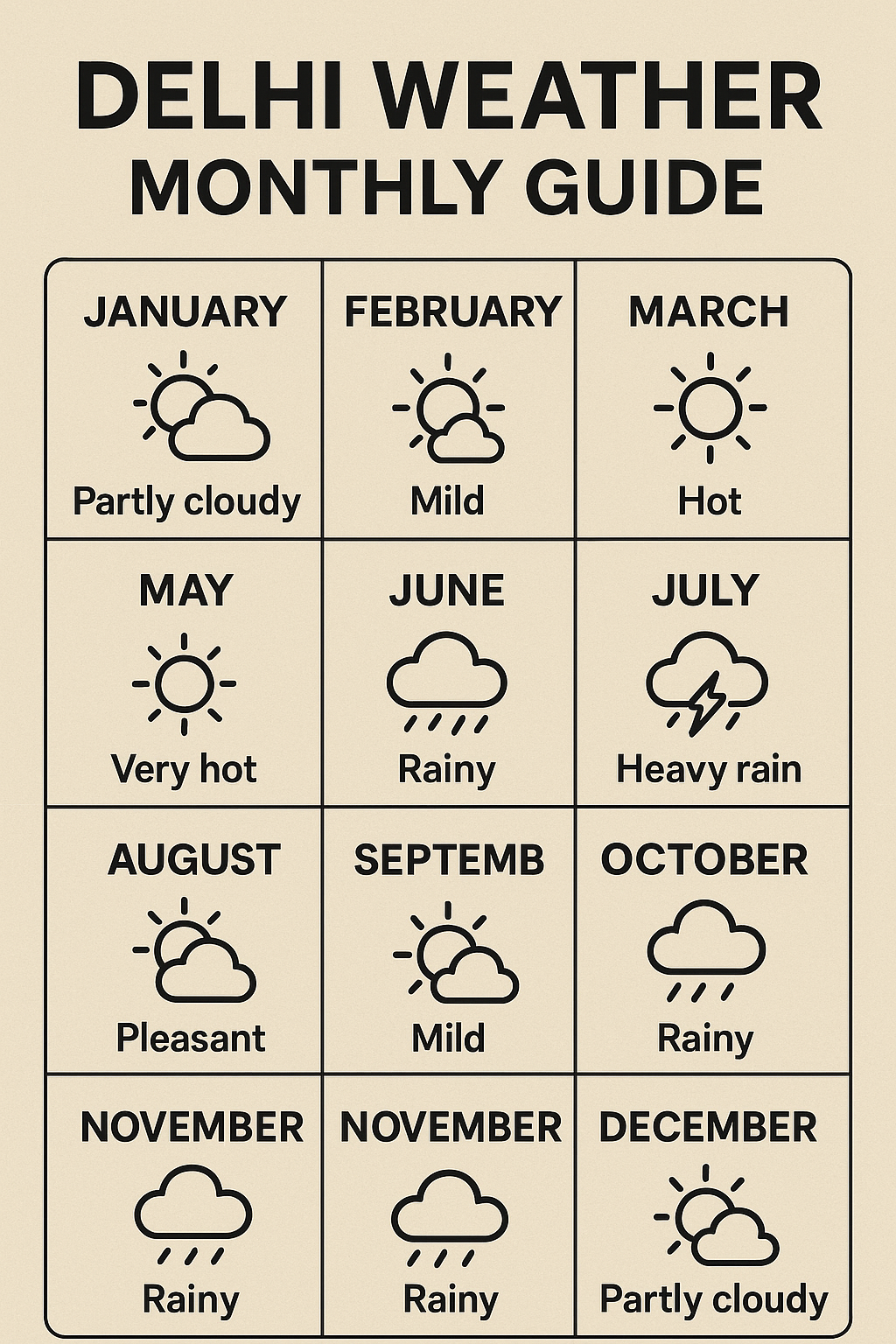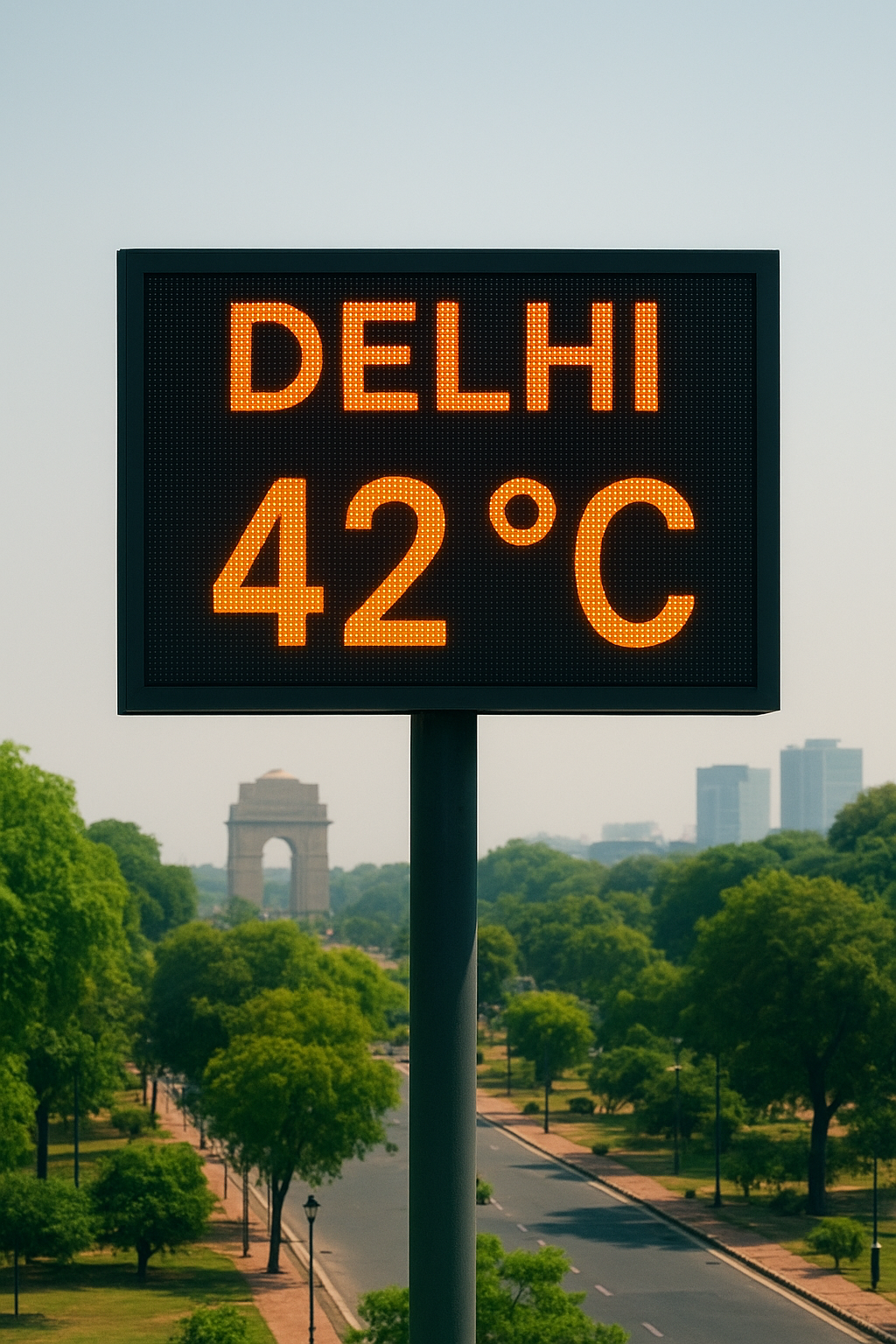Every year, residents and visitors in India’s capital ask the same question: Why is Delhi so cold? While the city is infamous for its scorching summer heat, its winter chill is equally intense, with temperatures often plummeting to near-freezing levels.
The answer isn’t a single factor, but a perfect storm of geography, meteorology, and even pollution. This article breaks down the key scientific reasons behind North India’s surprisingly cold winters.
1. The Continental Climate: Landlocked and Extreme
Delhi is located far from the moderating influence of the sea. This is known as a continental climate. Large land masses heat up and cool down much faster than oceans.
- Summer: The land absorbs heat rapidly, leading to extreme highs.
- Winter: The land loses this heat equally fast, leading to sharp drops in temperature, especially at night. Coastal cities like Mumbai, in contrast, have a “maritime climate” where the ocean acts as a temperature buffer, keeping winters much milder.
2. The Western Disturbances: Bringing the Chill and Moisture
This is the most critical meteorological factor. Western Disturbances are low-pressure storm systems that originate over the Mediterranean Sea and Caspian region and travel eastward, bringing winter rainfall to the Indo-Gangetic plains.
- How they work: As these systems move across Afghanistan and Pakistan, they pull cold, dry winds from the snow-clad Himalayas and even from as far as Siberia towards North India.
- The Result: They usher in cold air masses, causing a significant drop in the minimum temperature. When a western disturbance is active, it often leads to cloudy skies and rain, which further prevents the land from heating up during the day.
3. The Snow Blanket Effect
When western disturbances cause heavy snowfall in the Himalayan ranges, it creates a vast, cold region to the north. The winds blowing from these snow-covered mountains are intensely cold and dry. As they descend onto the plains, including Delhi, they bring a piercing chill that significantly lowers the perceived and actual temperature.
4. Frost and Freezing Fog: The Visible Chill
On calm, clear winter nights, the ground loses its heat rapidly through a process called radiational cooling. When the temperature of surfaces like grass, car roofs, and metal drops below the dew point, the moisture in the air condenses directly into ice crystals, forming frost.
This moisture often manifests as dense fog, particularly in the mornings. When temperatures are very low, this can become freezing fog, where tiny supercooled water droplets freeze upon contact with surfaces. This fog can persist for days, blocking the sun and creating a “cold wave” condition where temperatures struggle to rise.
5. The Winter Smog and Temperature Inversion
This is where human activity exacerbates the natural cold. During winter, a phenomenon called temperature inversion occurs.
- Normal Condition: Air temperature decreases as you go higher in the atmosphere.
- Temperature Inversion: A layer of warm air acts like a lid, trapping a layer of cold air—and all the pollution within it—close to the ground.
This trapped layer of smog (a mix of smoke and fog) is highly effective at blocking sunlight. The sun’s rays cannot penetrate effectively to warm the surface, resulting in colder daytime highs. The days remain gloomy and cold, even if the sun is technically up.
6. The Wind Chill Factor
The “feels like” temperature is often much colder than the actual thermometer reading due to the wind chill factor. Cold, dry winds, especially from the north and northwest, strip away the thin layer of warm air that surrounds our bodies. This makes a 10°C day feel like it’s 5°C or lower, adding to the biting sensation of the cold.
Frequently Asked Questions (FAQ)
Q: Is Delhi colder than a hill station like Shimla?
A: Not typically. While Delhi’s plains get very cold, hill stations at higher altitudes have consistently lower temperatures. However, Delhi’s combination of cold, humidity, and wind can sometimes make it feel just as harsh.
Q: Why are Delhi’s nights so much colder than its days?
A: Clear skies and dry air allow the heat absorbed by the ground during the day to escape rapidly back into the atmosphere at night. This leads to a very high diurnal temperature range (the difference between day and night temperatures).
Q: When is the coldest month in Delhi?
A: January is typically the peak of winter, with the coldest temperatures and the highest frequency of dense fog and cold wave days.
Q: Is climate change affecting Delhi’s winters?
A: Yes, climate change is leading to more weather variability. This can result in later onset of winters, sharper and more intense cold snaps, and unpredictable patterns of western disturbances.
Conclusion
Delhi’s cold is not a myth; it’s a complex interplay of its landlocked geography, the crucial role of western disturbances, and the unfortunate amplification by urban pollution. Understanding this science not only satisfies curiosity but also helps us better prepare for the season, dressing in layers and staying informed about weather forecasts and air quality updates.



